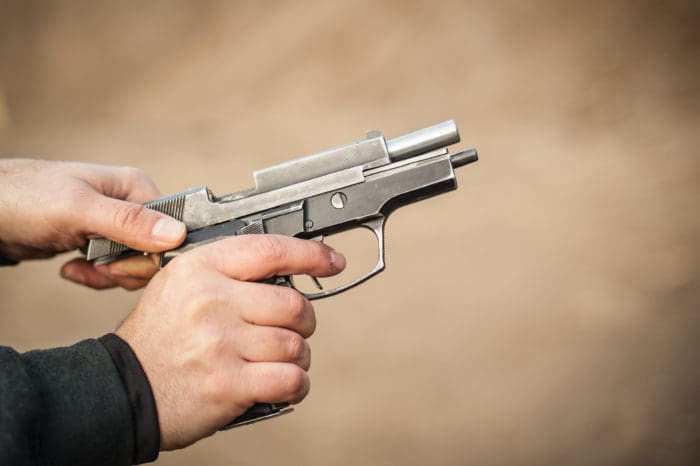For the most part, The People of the Gun have little time for “Israeli carry.” They scoff at the idea of carrying a pistol with an empty chamber. “Why add an extra step to a defensive gun use, especially when adrenaline is flowing and time is short?” Safety? “Keep your finger off the trigger!” Yes, well, let’s take a look at the history of this carry method and current state of Israeli method in Israel.
So-called Israeli carry pre-dates Israel. Empty-chamber carry was adopted and popularized by legendary close quarters combat self-defense instructor W. E. Fairbairn. Fairbairn considered the relative frequency of administrative gun handling vs. actual gunfighting and declared chamberless carry to be the best method with the highest gun safety for people with limited training.
Fairbairn institutionalized the method for the Shanghai police in the early 1910s. His 1942 book Shooting to Live With the One-Hand Gun spread the gospel of empty chamber carry.
For most of the 20th century, “Israeli carry” was the standard for military, police and civilians. The state of Israel was created on May 14, 1948. Its fighters/civilians carried their handguns in the “traditional” manner, without one in the chamber.
In post-war America, with the development of modern drop-safe semi-automatic handguns, World War II veteran Jeff Cooper and others argued against empty-chamber carry. American law enforcement and civilians followed suit.
Most of the rest of the world didn’t switch to carrying semi-automatic pistols with a round chambered and it still hasn’t. While there are a few Israeli military units that carry pistols with a round chambered, Israelis continue to carry in real life without a round chambered. They use the support hand to manipulate the action and put a round in the chamber.
First, it’s highly discouraged to carry with one in the pipe for civilians, most military and the police. For another, empty-chamber carry satisfies the same goal that inspired the practice in the first place: sidearm safety for carriers and bystanders.
If you’ve been to Israel, you may have noticed the large number of people carrying firearms, including double action pistols and double action revolvers. Armed soldiers (on and off duty), security, police, and the Mossad are everywhere. I haven’t seen a more openly armed populace with modern firearms anywhere in the world.
Despite the fact that Israel is surrounded and regularly infiltrated by its enemies, the likelihood of an attack by a terrorist or criminal are low. According to Macrotrends, Israel’s murder rate in 2019 was 1.47 per 100,000 people. In the U.S., it was 5.07.
Most of the altercations that Israeli police officers deal with are physical; gunfights between police and armed criminals are almost non-existent. (Israeli police don’t wear body armor.) Additionally, most terrorist acts don’t involve firearms and or bombs as they did during the second intifada.
There’s another important factor: Most Israelis who carry a firearm don’t carry because they want to. They carry one because they have to. This tends to reduce the sense of personal responsibility for their firearm. All of which means that the odds of an Israeli being injured or killed by a negligent discharge are higher than the chances of facing a similar fate at the hands of a terrorist or armed criminal.
In the past year in Israel, with the frequency of car-ramming and stabbing attacks by terrorists, carrying a firearm with a round chambered or not, didn’t prevent any of these terrorists from being neutralized.
As for the delay caused by carrying with an empty chamber, racking and then firing . . .
To qualify for duty, all Israeli military commandos and police units must meet an Israeli draw standard of 1.2 seconds for placing the first round on target at eight meters with a handgun. That’s starting with an un-chambered pistol, no round under the firing pin. I doubt that most chambered-carrying U.S. gun owners can match that at the gun range, much less in the field under pressure.
As a former IDF soldier and current U.S. civilian, I always carry chambered and train my students to do so as well. But I fully understand those who choose to carry with a loaded magazine and without a round chambered, whether for safety or psychological comfort, and regardless of each particular gun’s safety mechanisms.
In the end, your ability to defend yourself and neutralize a threat won’t come down to whether or not you carry your defensive firearm with a round of ammo chambered. It will depend on the way you train, how often, and the circumstances surrounding the altercation.
Ron Grobman is the founder of Tactical Fitness in Austin, Texas.
